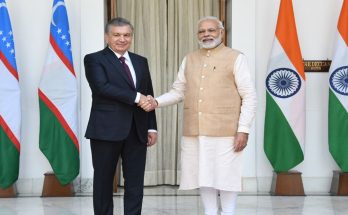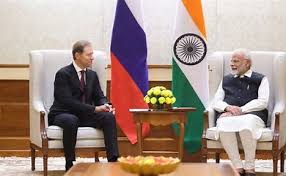The government’s decision to insist that the Indian Air Force induct a large number of Light Combat Aircraft (LCA) fighters is the kind of shock treatment that was needed to push the ‘Make in India’ project.
A news report says that the government has rejected the IAF’s demand for 44 more Rafale aircraft, in addition to the deal for 36 announced by the government earlier this year.
Instead, the IAF has been told that the kind of numbers it wanted could only be met by inducting the LCA.
The IAF has itself to blame for its predicament. The medium multi-role combat aircraft (MMRCA) was originally intended to be a stop-gap measure to enable the LCA project to be completed. However, the IAF rigged the competition by including the heavier, more` capable two-engine fighters and knocking out the best option, the Swedish Gripen.
As a result, a competition for a $8 billion stop-gap fighter morphed into a huge buy involving 126 Rafales which would have cost the nation anywhere between $25-30 billion.
Critics cite a C&AG report of May 2015 claiming that the aircraft had 53 shortcomings in respect of the IAF’s requirements such as an integral self-protection jammer and a radar warning receiver. They also noted that the aircraft weighed more than it should and had a lower internal fuel capacity.
But K Tamilmani, the DRDO’s aerospace chief, has, more recently, said that the modified version of the LCA addressed most of the air force’s concerns relating to electronic warfare systems, flight computer, radar and maintenance problems.
In pushing the LCA in the IAF’s face, the government has dealt with one of the two big problems faced by the project – the IAF’s refusal to take ownership of the LCA.
In contrast, the Indian Navy has ‘owned’ the LCA-Navy project and has worked with the DRDO to tweak the aircraft to meet its requirements.
Some of these modifications – a stronger undercarriage and Levcons to provide it greater agility – will figure in the aircraft that will now be made for the IAF. It needs to be noted that the LCA, which will be used for close air support or countercounter air missions, will not need the kind of sophisticated electronics that an aircraft designed to operate deep in enemy territory needs.
Third party assessments are that the LCA is a capable fighter, better than its counterparts like the Sino-Pak JF-17. Its use of composites which cover 90 per cent of its surface provides it natural stealth. Its design makes it highly stable and easy to fly, a fact attested to by Ruag specialists who wanted to market a tandem-seat version as a lead-in fighter trainer (LIFT).
But the government still needs to deal with the second big problem – getting the state-run Hindustan Aeronautics Ltd (HAL) to deal with the project with the seriousness it deserves.
As the C&AG report noted, the manufacturing facilities at HAL currently cater to the production of only four aircraft per year, as against the eight needed, because of delays in procuring plant and machinery, tools and the construction of production hangars.
Likewise, repair and overhaul (ROH) facility for LCA, as specified in the ASR, has not been fully created. HAL, which makes a great deal of money through licence-producing aircraft like the Su- 30MKI, for which it charges the government Rs 100 crore more than the cost for an off-the-shelf item from Russia, couldn’t be bothered with the need to encourage an Indian project.
Indeed, some years back, the Swiss-German giant Ruag wrote to HAL offering its expertise in setting up assembly lines to manufacture the LCA and offering an industrial partnership to sell the aircraft abroad. But HAL did not even have the courtesy to reply.
This would be a good time for the government to look into the IAF’s claim that it needs at least 45 squadrons to take on the ‘two-front collusive threat’ from Pakistan and China. As of now, says the IAF, it only has 35 active fighter squadrons, and even this could go down to 32.
There are two issues here – the nature of war of the future. Given the fact that India, Pakistan and China are nuclear-armed states, the chances of any kind of an all-out war are low. At worst, we may see localised clashes such as the Kargil mini-war.
But this is not something which the IAF can decide, it requires the government to make an overall strategy assessment and then pinning down the kind of capabilities India’s armed forces need.
This will enable a planned acquisition of capabilities, instead of the present chaos which has led to the fiasco of the Rafale buy and the decision to halve the size of the mountain strike corps.
(The writer is a Distinguished Fellow at Observer Research Foundation, Delhi)
Courtesy: ORF– Make in India gets new wings
Author Profile
- India Writes Network (www.indiawrites.org) is an emerging think tank and a media-publishing company focused on international affairs & the India Story. Centre for Global India Insights is the research arm of India Writes Network. To subscribe to India and the World, write to editor@indiawrites.org. A venture of TGII Media Private Limited, a leading media, publishing and consultancy company, IWN has carved a niche for balanced and exhaustive reporting and analysis of international affairs. Eminent personalities, politicians, diplomats, authors, strategy gurus and news-makers have contributed to India Writes Network, as also “India and the World,” a magazine focused on global affairs.
Latest entries
 DiplomacyOctober 4, 2025UNGA Resolution 2758 Must Not Be Distorted, One-China Principle Brooks No Challenge
DiplomacyOctober 4, 2025UNGA Resolution 2758 Must Not Be Distorted, One-China Principle Brooks No Challenge India and the WorldJuly 26, 2025MPs, diplomats laud Operation Sindoor, call for national unity to combat Pakistan-sponsored terror
India and the WorldJuly 26, 2025MPs, diplomats laud Operation Sindoor, call for national unity to combat Pakistan-sponsored terror India and the WorldJuly 25, 2025When Fire Ends, Diplomacy Begins
India and the WorldJuly 25, 2025When Fire Ends, Diplomacy Begins India and the WorldJuly 16, 2025Operation Sindoor and its Aftermath: India’s Successful Diplomatic Outreach
India and the WorldJuly 16, 2025Operation Sindoor and its Aftermath: India’s Successful Diplomatic Outreach








